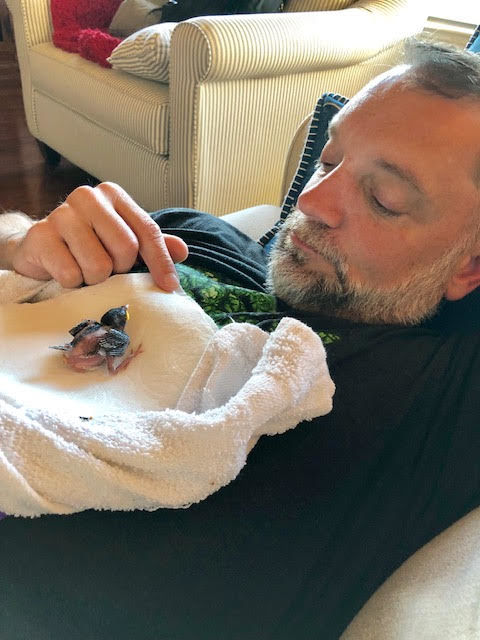When one local family found a baby bird
Published 10:00 am Wednesday, July 3, 2019

- unnamed.jpg
Day 1 – John Mire discovers a baby bird, dubbing her “Iris” after the bush where he found her
Day 2 – Iris sprouts tail feathers
Day 3 – Iris grows wing feathers
Day 4 – Iris opens her eyes
Day 5 – Iris gets her wings
Day 6 – Iris eats scrambled eggs
Day 7 – Iris gets her first bath
Day 9 – Iris eats her first cricket
Day 12 – Iris tries to fly
Day 13 – Iris takes off in flight, landing on John’s head
Day 15 – Julie and John Mire attempt to release Iris, but she prefers to perch on Julie’s
hand
Day 16 – Iris discovers her newfound fame on Facebook
Day 18 – Iris tries mealworms, but prefers crickets
Day 23 – Iris appears on “Right This Minute,” a nationally syndicated show
Day 30 – Iris ventures off with two sparrows, returning home after Julie calls her
Today – Iris is in her new poolside aviary so that she can live with the Mires until she decides to spread her wings. She has her own Facebook page, Saving Iris, which has over 140,000 views and growing.
Iris’ Story
One morning, John Mire was perusing through his yard when he spotted a bright pink object underneath an iris bush. On closer inspection, he realized that it was a baby bird, which he presumed had perished. But, on closer inspection, he found that the fowl was indeed alive, and striving to thrive. That fledgling was dubbed Iris, in honor of the bush under which she was discovered.
John and his wife, Julie, reached out on Facebook on how to care for and keep this orphaned infant alive. Fortunately, Letitia Labbie, founder of Raptor Rehabilitation/Educator at Acadiana Wildlife, Inc., offered some sage advice. Surprisingly, one of her expert tips was to not offer water to the birdling. “We presumed that a bird would need rehydration, but the expert informed us that birds could drown this way,” John shared.
The bird expert also advised the compassionate couple to feed the bird scrambled eggs and moistened catfood. “We did not know what type of bird it was,” John explains. “So, she told us that the diet could vary depending on whether the bird was carnivorous or plant-eating.”
The Mires learned from the expert that baby birds need to be fed every 30 minutes to an hour. So, John and Julie alternated taking Iris to work to make sure that she was being fed properly. John, who owns an oil and gas business in Lafayette, found that most of his co-workers were supportive, but there was one fowl-fearer. Julie, who does marketing for the diocese, faced no objections from her spiritual peers.
Within three weeks, Iris grew from an unrecognizable pink blob to a beautiful, full-grown sparrow. While one would think that her instinct would be to fly away, her owners found to the contrary. “We tried releasing her into the wild, but she would fly straight back to Julie,” John explains
Quickly, the Mires learned that Iris had probably “imprinted,” meaning that she assumed the human identity of her rescuers. They attempted releasing her several times, but she always returned home. Soon, the Mires’ neighbors got to know Iris through Facebook, and would report back to them on her sightings.
Fortunately, Iris’ last excursion, which lasted overnight, had a happy ending. Neighbors posted her whereabouts on Facebook, leading to her reunion with the Mires. At that point, the Mires realized that it was more dangerous to release her to the wild.
Recently, the couple ordered an aviary, reaching a pinnacle of over six feet, for Iris’ new home. The plan is to keep Iris indoors and protected for the remainder of her life – which could be 20 years or more.
In the meantime, the Mires’ two cats will just have to stay separated from their prospective prey. But, the Mires are in it for the long flight.





